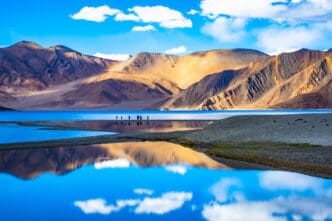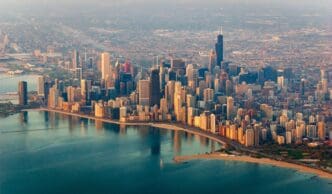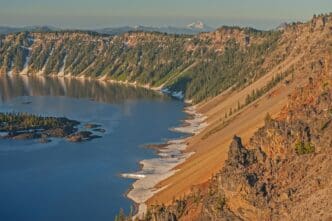For travelers seeking one of Earth’s most spectacular natural wonders, witnessing the Northern Lights is a quintessential bucket-list experience. This celestial ballet, officially known as the aurora borealis, is best viewed by those who venture into the high-latitude regions of the Northern Hemisphere, primarily within a band called the auroral zone. The prime viewing season runs from late August to early April, when the nights are long and dark, with destinations in Scandinavia, Iceland, Canada, and Alaska offering the most reliable and breathtaking displays for anyone hoping to see the sky dance in ethereal shades of green, pink, and violet.
Understanding the Aurora Borealis
Before packing your thermal gear, it helps to understand what you’re hoping to see. The Northern Lights are not a weather phenomenon but an astronomical one, a direct result of our planet’s interaction with the sun.
What Causes This Celestial Dance?
The spectacle begins nearly 93 million miles away at the sun. The sun constantly emits a stream of charged particles, known as solar wind. When this solar wind reaches Earth, our planet’s magnetic field, or magnetosphere, deflects most of it.
However, the magnetic field is weaker at the North and South Poles. Here, some of those charged particles are funneled down into the upper atmosphere. As they collide with gas atoms and molecules—primarily oxygen and nitrogen—they transfer energy, causing the gases to glow. The different colors are determined by the type of gas and the altitude of the collision; green, the most common color, is typically produced by oxygen at lower altitudes, while rare, all-red auroras are caused by high-altitude oxygen.
The Solar Cycle’s Crucial Role
The sun’s activity is not constant; it follows an approximately 11-year cycle, moving from a period of low activity (solar minimum) to high activity (solar maximum). During solar maximum, the sun produces more sunspots, solar flares, and coronal mass ejections, sending more potent streams of charged particles toward Earth.
This increased activity results in more frequent and intense auroral displays. We are currently approaching a solar maximum, expected to peak around 2024 and 2025, making the next few winters an exceptionally promising time for aurora chasers. This period offers a significantly higher probability of seeing vibrant, dynamic, and widespread Northern Lights.
Planning Your Northern Lights Expedition
A successful aurora hunt is a combination of good timing, the right location, and a bit of luck. Proper planning can dramatically increase your chances of witnessing a memorable show.
When to Go: Timing is Everything
The “aurora season” generally spans from late August to early April. The key ingredient is darkness, which is why the summer months, with their midnight sun, are not suitable for viewing in the far north. The periods around the autumn and spring equinoxes (September/October and March/April) are often cited by scientists as being particularly conducive to strong auroral activity.
As for the time of night, the most active displays often occur between 10 p.m. and 2 a.m. local time. Patience is paramount; the lights can appear suddenly and last for just a few minutes or dance for hours. It’s best to dedicate several nights to your search to maximize your odds.
Essential Conditions for a Great Sighting
Beyond being in the right place at the right time, three conditions are critical. First, you need darkness, which means getting as far away from city light pollution as possible. Second, you need clear, cloudless skies, as the aurora occurs far above any cloud cover.
Finally, you need auroral activity. Download a reliable aurora forecast app (like My Aurora Forecast or Aurora Alerts) and check space weather websites (like NOAA’s Space Weather Prediction Center). These tools provide short-term forecasts on the strength of the aurora, measured by the Kp-index, helping you decide if it’s worth staying up late.
Top Destinations for Witnessing the Northern Lights
While the lights can occasionally be seen at lower latitudes during intense solar storms, your best bet is to travel north into the auroral zone. Each destination offers a unique cultural and scenic backdrop for the celestial show.
Norway: Fjords and Coastal Wonders
Norway’s long, fjord-carved coastline offers a dramatic setting. The coastal climate, influenced by the Gulf Stream, can sometimes lead to milder temperatures and clearer skies than inland locations at the same latitude.
Tromsø, known as the “Gateway to the Arctic,” is a vibrant city well above the Arctic Circle and a major hub for aurora tours. For a more remote experience, the Lofoten Islands offer a stunning landscape of sharp peaks rising directly from the sea. A Hurtigruten coastal cruise is another popular option, allowing you to hunt for the lights from the water as you sail along the coast.
Sweden: Lapland’s Icy Wilderness
Swedish Lapland is a land of vast forests, frozen rivers, and pristine wilderness. Abisko National Park is arguably one of the best places on Earth to see the aurora, thanks to a unique microclimate that creates a “blue hole”—a patch of sky that often remains clear even when surrounding areas are clouded over.
Nearby, the town of Kiruna is home to the world-famous Icehotel, where you can combine your aurora quest with the unforgettable experience of sleeping in a room made entirely of ice and snow. Activities like dog sledding and snowmobiling through the silent, snow-covered landscape complete the Arctic adventure.
Finland: Santa’s Homeland and Glass Igloos
Finnish Lapland has perfected the art of comfortable aurora viewing. The region is famous for its purpose-built glass igloos and luxury cabins with large windows, allowing you to watch for the lights from the warmth and comfort of your bed.
Destinations like Rovaniemi (the official hometown of Santa Claus), Saariselkä, and Kakslauttanen are leaders in this type of accommodation. Finland also deeply embraces its natural heritage, offering travelers the chance to combine sky-gazing with traditional Finnish sauna experiences, reindeer sleigh rides, and husky safaris.
Iceland: The Land of Fire, Ice, and Light
Iceland’s position just south of the Arctic Circle makes the entire country a potential viewing platform. What makes it truly special is its otherworldly landscape; the lights dancing above a glacial lagoon, a powerful waterfall, or a volcanic crater makes for an unparalleled photographic opportunity.
While you can see the lights from the capital, Reykjavík, it’s best to drive out to darker locations like Thingvellir National Park or the Jökulsárlón Glacier Lagoon. The country’s Ring Road makes it accessible for a self-drive tour, offering the flexibility to chase clear skies and find unique foregrounds for your aurora experience.
Canada: North America’s Auroral Frontier
Northern Canada lies directly under the most intense part of the auroral oval, promising some of the most frequent and active displays in the world. Yellowknife in the Northwest Territories has branded itself the “Aurora Capital of North America” for its high viewing probability and flat, unobstructed landscapes.
The Aurora Village near Yellowknife offers a comfortable basecamp with heated teepees (tipis) for waiting out the cold. Whitehorse, in the Yukon, is another excellent base, offering a rugged, frontier feel with vast wilderness to explore by day as you wait for the night’s celestial performance.
Alaska, USA: America’s Last Frontier
For U.S. travelers, Alaska offers a domestic option for a world-class aurora experience. The city of Fairbanks is ideally situated under the auroral oval and is home to the University of Alaska’s Geophysical Institute, a key center for aurora research.
From Fairbanks, you can take tours further north, even crossing into the Arctic Circle. A popular activity is to combine aurora viewing with a relaxing soak at the Chena Hot Springs Resort, enjoying the warmth of the geothermal waters while the sky above shimmers with light.
Tips for a Successful Aurora Hunt
A little preparation goes a long way in making your trip both successful and comfortable. Dressing appropriately and knowing how to capture the moment are key.
What to Pack and Wear
Arctic winter nights are profoundly cold. The key is layering. Start with a thermal base layer (merino wool is excellent), add a fleece or down mid-layer, and finish with a windproof and waterproof outer shell. Insulated snow pants, wool socks, waterproof winter boots, a warm hat, a balaclava or face mask, and insulated gloves or mittens are non-negotiable.
Photographing the Northern Lights
Your smartphone might capture a faint glow, but for stunning photos, you’ll need a camera with manual settings. A sturdy tripod is essential to keep the camera steady during long exposures. Use a wide-angle lens with a wide aperture (e.g., f/2.8 or lower), set your focus to infinity, and start with a high ISO (1600-3200) and a shutter speed of 10-20 seconds. Adjust from there to get the perfect shot.
Managing Expectations
Remember that the aurora is a natural event and sightings are never guaranteed. Weather can be unpredictable, and auroral activity can be quiet. Book a trip for at least three to four nights to increase your chances, and choose a destination that offers other enjoyable activities so your trip is memorable regardless of what the sky does.
Ultimately, the quest for the Northern Lights is more than just a trip; it’s an pilgrimage to the pristine, dark skies of the planet’s northernmost reaches. The moment the first ghostly green ribbon appears, shimmering and shifting silently across the cosmos, is a profound experience that connects you to the raw power and beauty of the natural world. With careful planning and a spirit of adventure, you can stand under this celestial marvel and witness a spectacle you will never forget.








